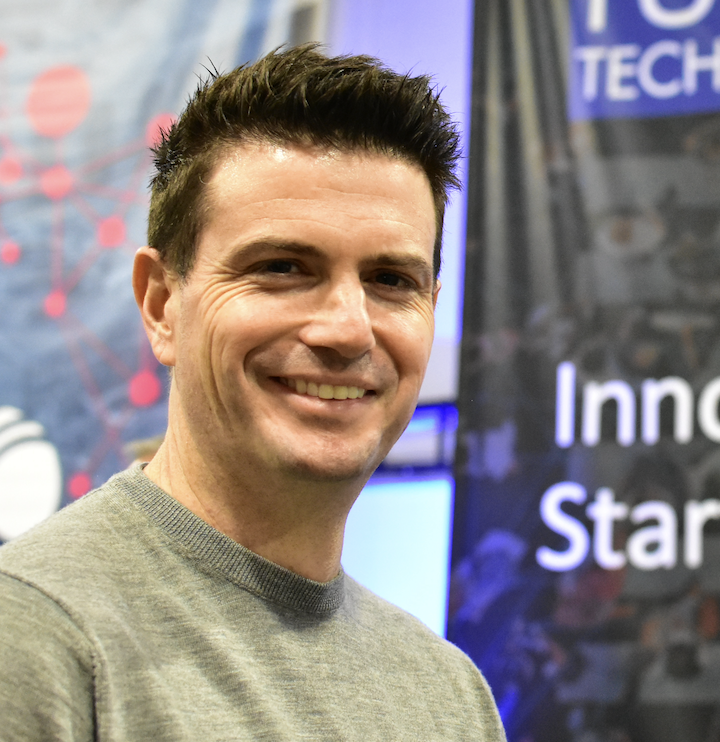US industrial integrator Future Technologies has completed a strategic recapitalization with local private equity firm Battle Investment Group to become North America’s largest private 5G provider within 12 months, using its new equity for acquisitions and expansion amid surging demand for industrial AI and IoT connectivity.
In sum – what to know:
Battle stations – Georgia based Battle Investment has taken a majority stake in Future Technologies via strategic recapitalization; CEO Peter Cappiello retains equity and control.
Industrial pitch – Future Technologies has a plan to be the biggest private 5G supplier in North America by the end of 2026; it will use its new capital to make acquisitions shortly.
Constant focus – The firm remains focused on critical industrial connectivity – to link the AI ecosystem (data centers and devices), but not to be sidetracked in those markets.
US industrial-integrator specialist Future Technologies has completed a strategic recapitalization with local private equity firm Battle Investment Group, and set a target to be the “biggest” private 5G provider in North America within 12 months – including by making an acquisition (possibly a couple) by the end of 2025. The Georgia-based firm, selling industrial networking in the US for a quarter of a century already, has effectively swapped a decades-old family-owned controlling stake for a new private equity injection in order to shore-up its position as a critical comms provider between the buzzy enterprise AI data centre market and the bustling industrial IoT hardware scene.
It has not detailed the financial or structural makeup of its recapitalization, except to confirm that Battle Investment Group has taken a majority share. Peter Cappiello, its long-standing chief executive, also retains equity in the business, as well as direct charge of strategy and operations. Certain others have new minority stakes, RCR Wireless understands. Cappiello said the firm has not taken on any debt with the deal, and will make any strategic acquisitions – likely rival integrators in specialist industrial fields, possibly some hardware portfolio additions – with its new equity capital. How much money has it got? “Capital is not going to be a problem,” responded Cappiello.
The firm has caught the eye of both rival private 5G providers in the US, looking to bulk-up, and also of industrial enterprises, seeking to bundle integration functions into their services portfolios – for their own connectivity purposes, plus as new Industry 4.0 revenue engines. The firm is a major supplier for both Nokia and Ericsson in the US; it is a tactical go-to, as well, for certain US and non-US carriers, integrators, and other service providers, looking for boots on the ground to organise their private 5G deployments. It has Fortune 10-level industrial corporations on its books, it says, looking to multiply their private 5G setups outwards and upwards, with new networks and new applications.

Future Technologies’ revenue will jump by 30 percent in 2025, said Cappiello – on 30 percent growth in 2024. Its profit margin is growing at the same time, he said. Its sales “pipeline”, a rough count of confirmed interest, is 50 percent bigger than it was a year ago. Cappiello has set a new crawl/walk/run schedule, where the business will consolidate and expand through 2025 (crawl; including through acquisition), double both its revenue and headcount by the end of 2026 (walk; when it expects to deliver more domestic private 5G than any operator or integrator in the US), and completely transform by 2030 (run; when it has a nominal revenue target of $250 million).
Cappiello said: “We have grown with zero debt and zero investment; organically and profitably. We have penetrated all the vertical markets we are interested in – energy, manufacturing, transportation, utilities, government. We will have a record year on every count – pipeline, revenue, profit. The contracts are getting much bigger, and we want to accelerate. We want to be the biggest and best connectivity transformation company in North America. We are focused on that; that is our ambition. We see an opportunity to connect and secure US critical infrastructure – between this massive AI and power build-out on one side and the massive adoption of devices on the other.”
He added: “These things are happening fastest in the US. But we are not interested in chasing the AI hype, and we are not getting dragged into [the supply of] industrial devices. We are focused on the middle piece: the critical connectivity in industrial markets, integrating into these other sides. We will do the plumbing – the private 5G, fixed broadband, satellite comms, enterprise Wi-Fi, LoRa networks, BLE systems. We want to be the best and the biggest at that, connecting into the cloud and edge infrastructure to enable AI in all the sensors, cameras, and other devices.”
Future Technologies has emerged out of the private 5G hype phase – from “about 2022”, until the industrial AI madness took hold – as the sharpest integrator of its kind, said Cappiello. Unlike rival firms in the US, it is ducking the AI hype, he said, to stay focused on its core networking proposition. “We’re a bit of an outlier. Because lots of others have had their heads turned. It’s like Jim Collins’ 20 mile march,” he added, referencing the US business writer. “You’re walking 3,000 miles across the US, and some are racing because the sun’s out. But the ones that finish first will be the ones that walk 20 miles, each and every day, rain or shine.”
Cappiello said: “We are at an inflection point, where we have separated from the pack because of our discipline and focus, and we are now putting the capital behind it to go big in this space.”

